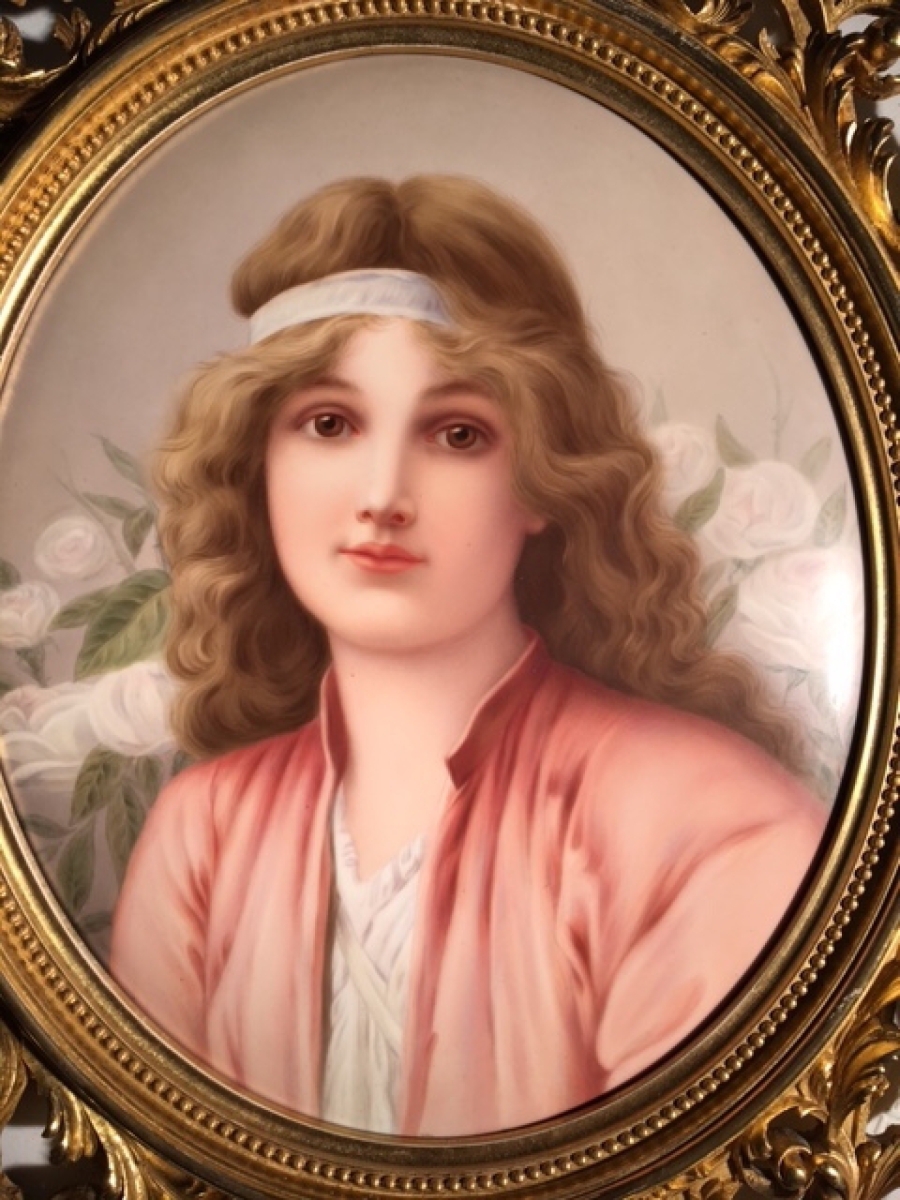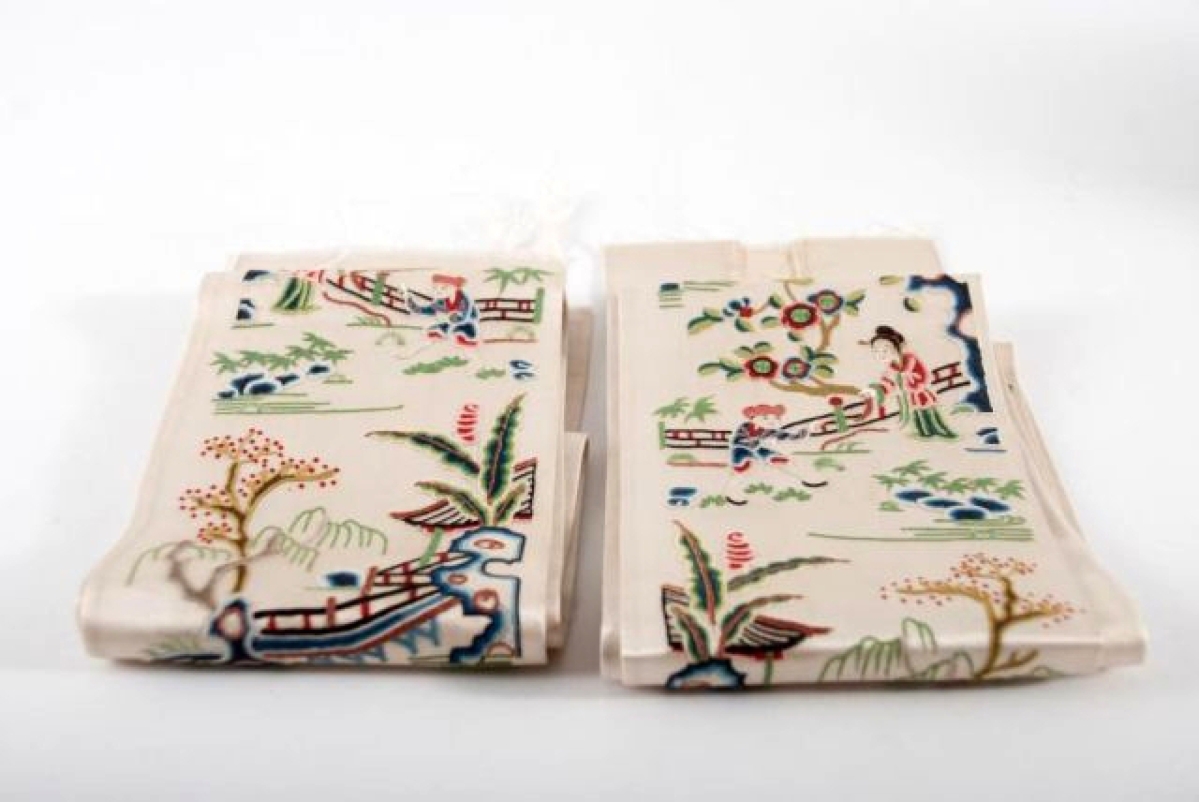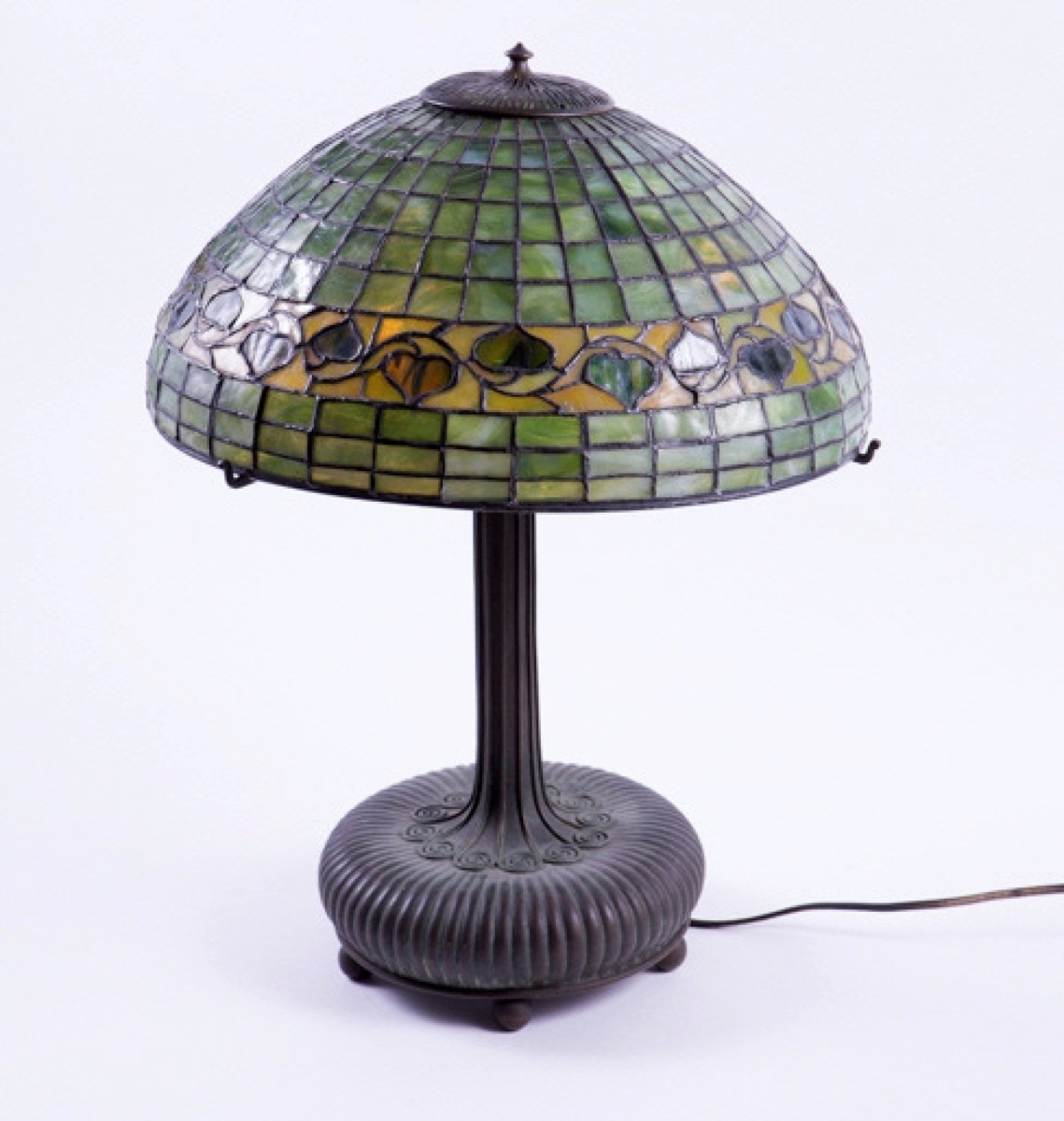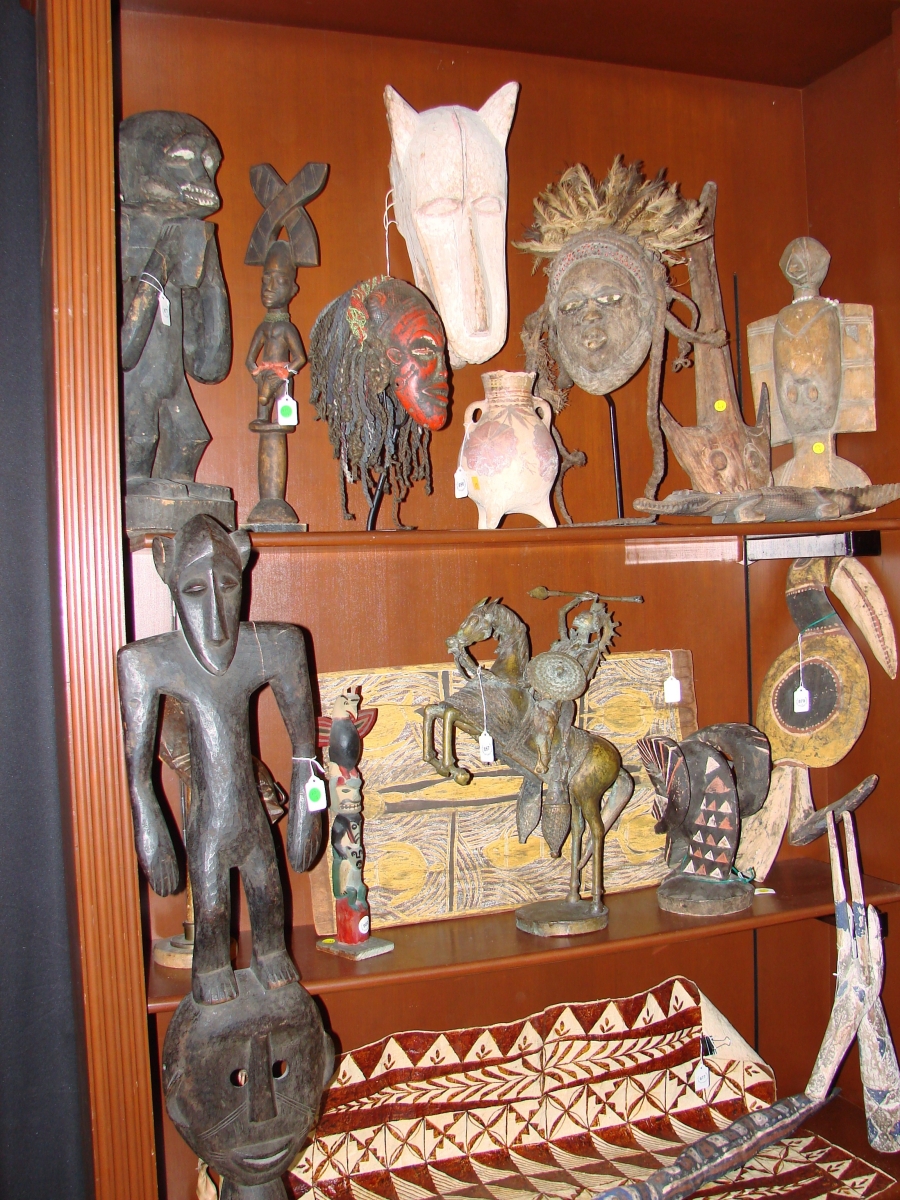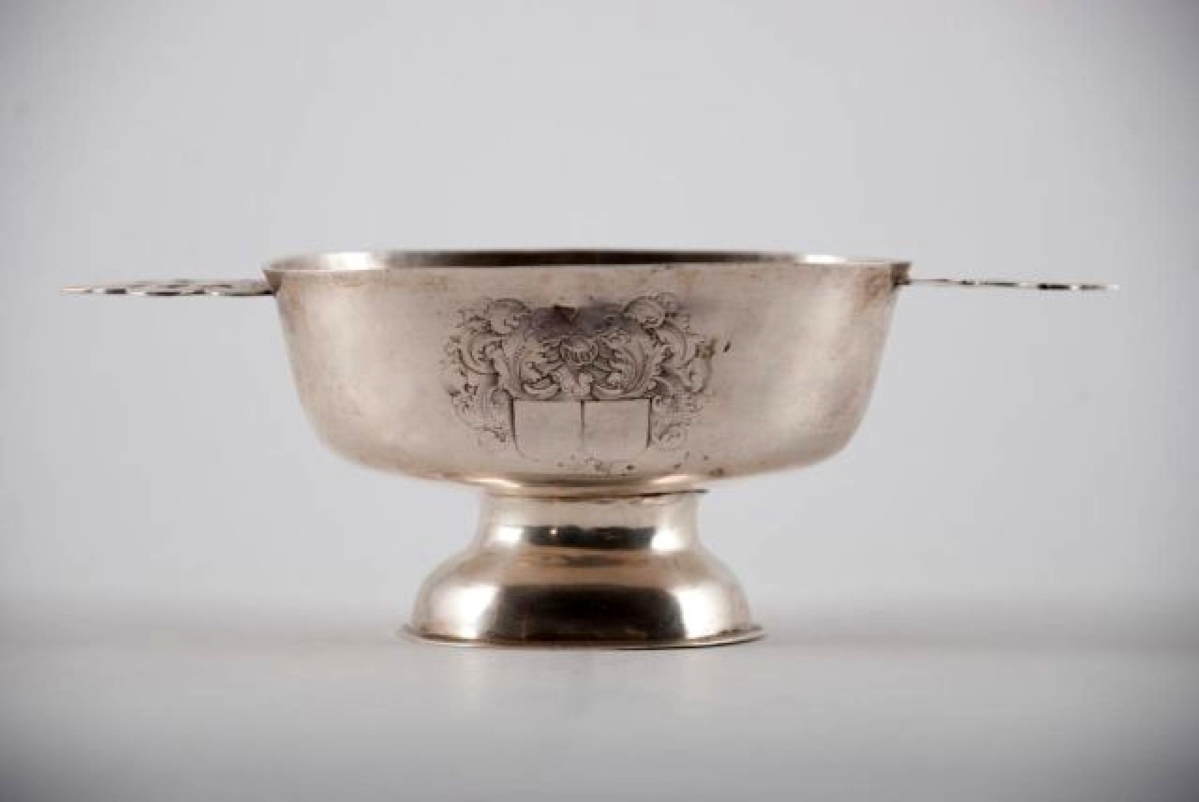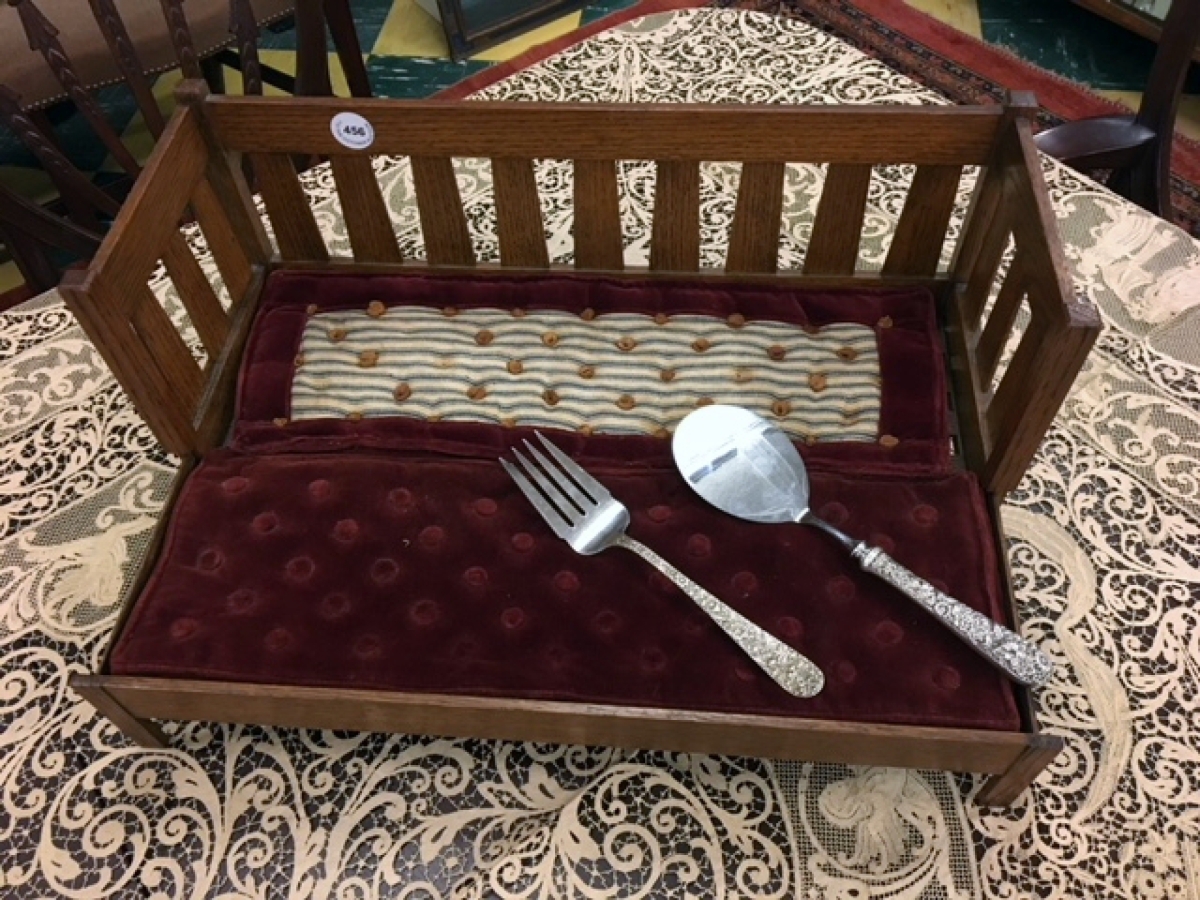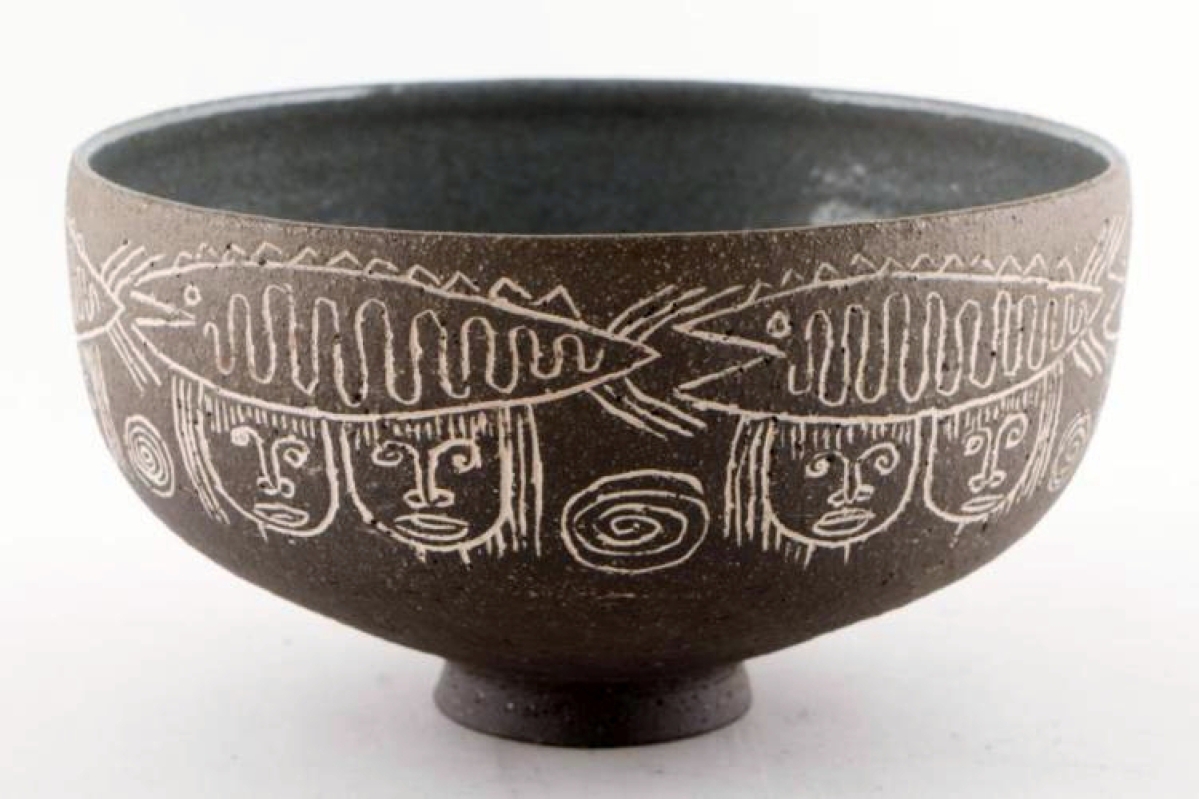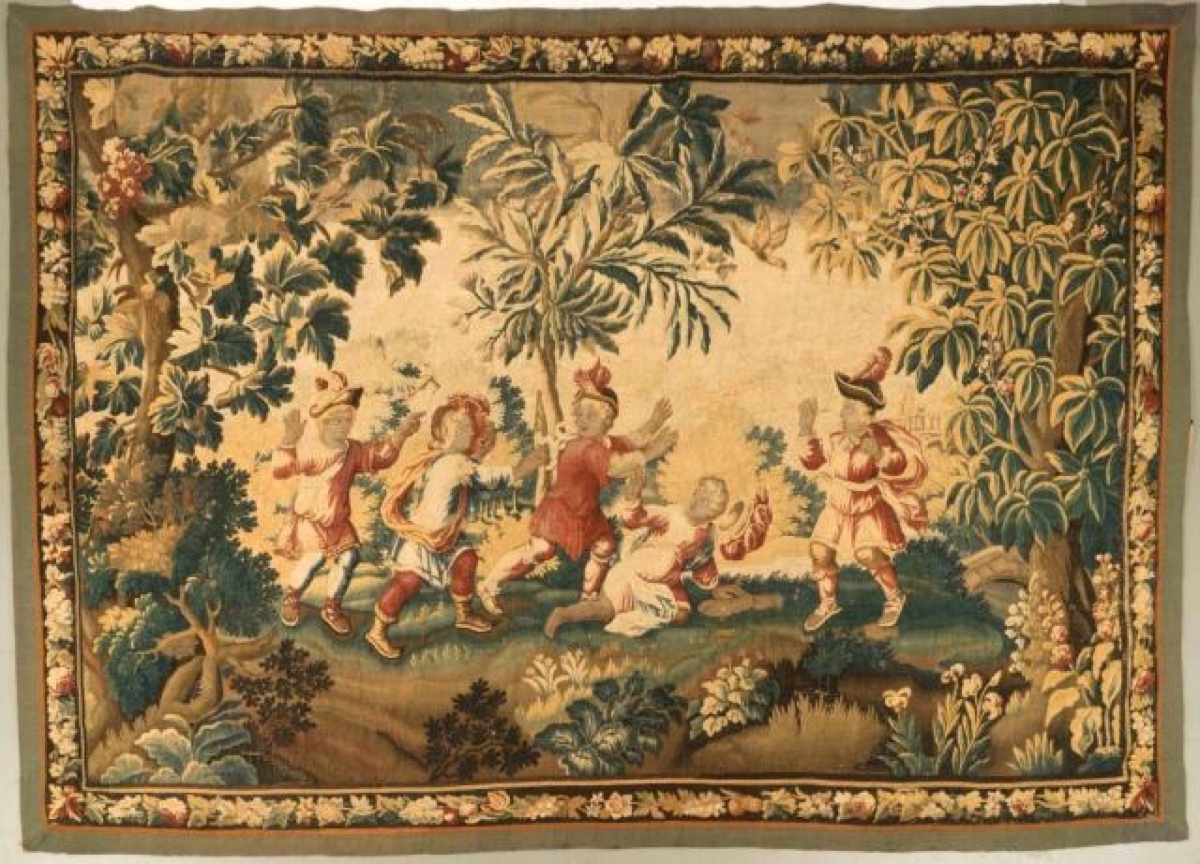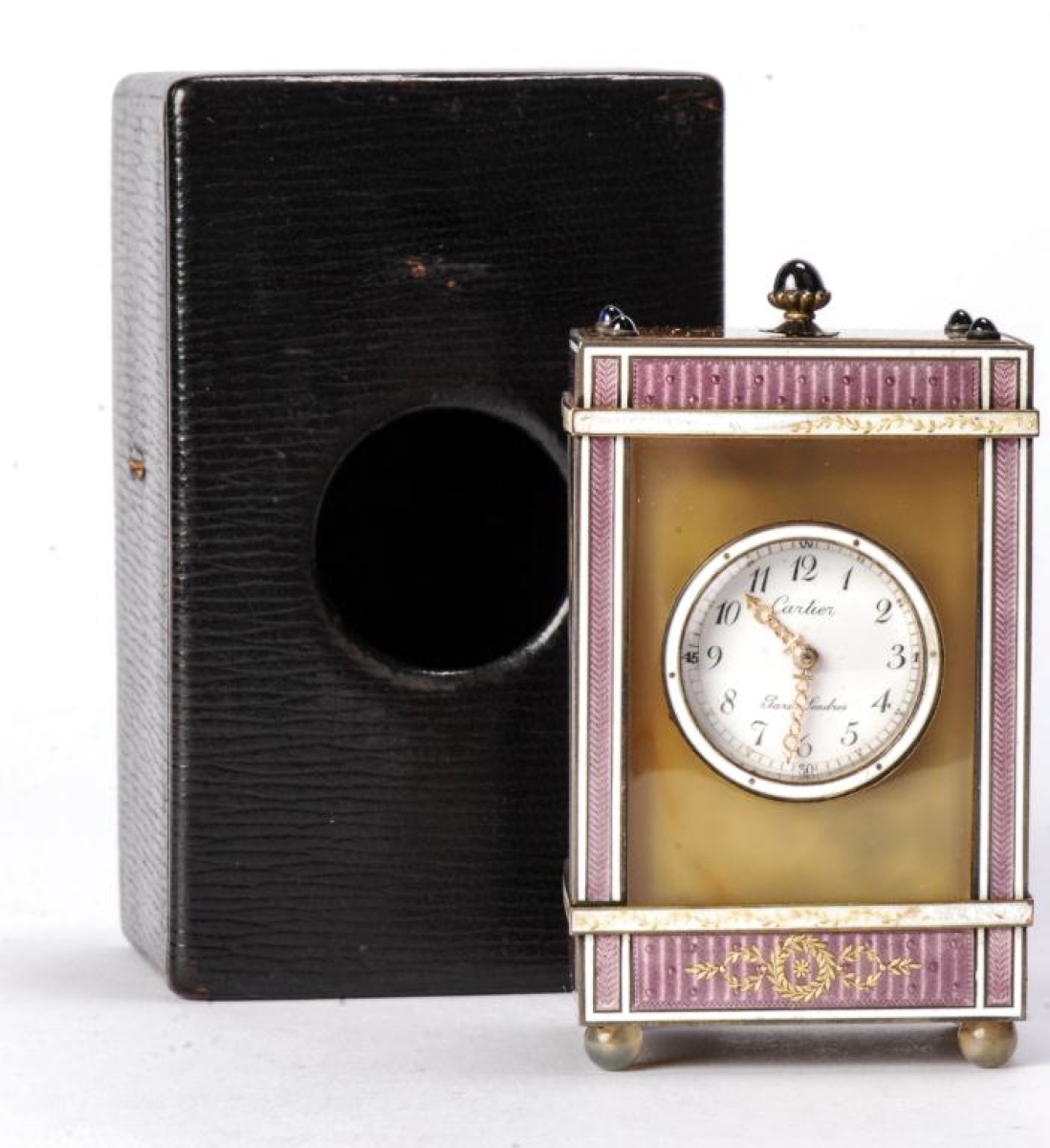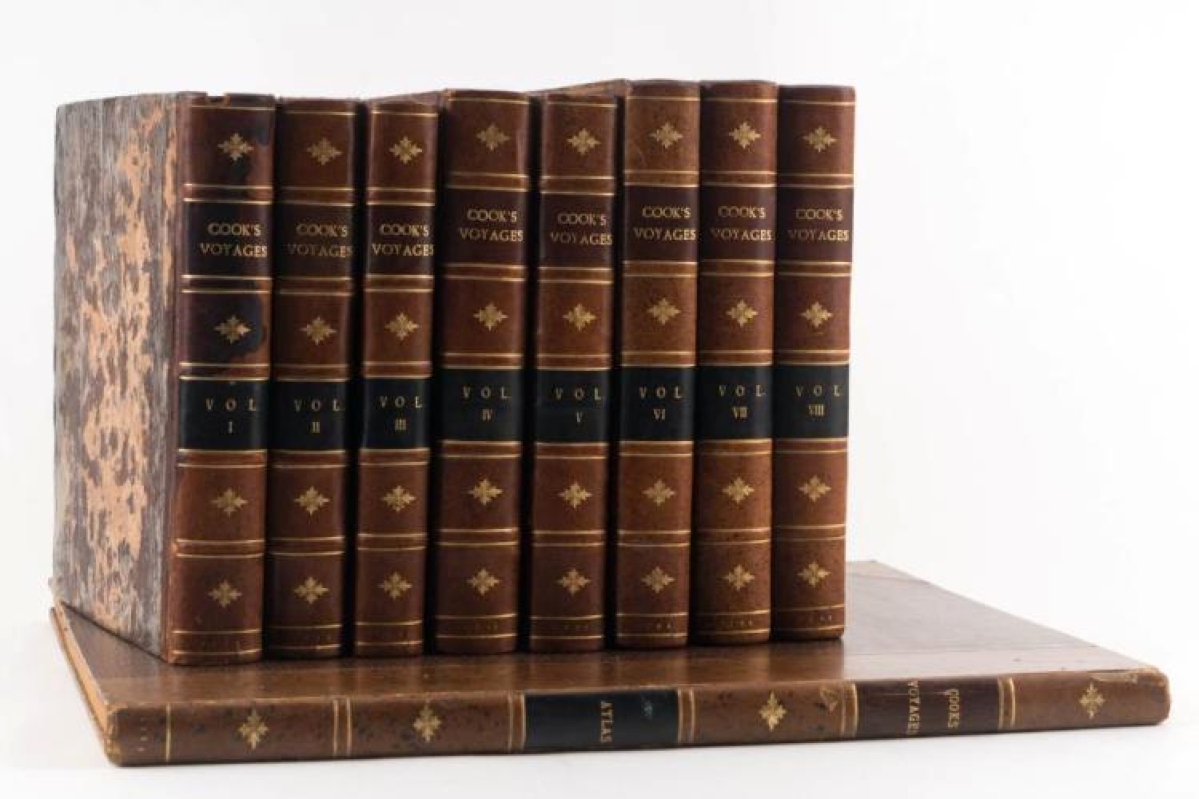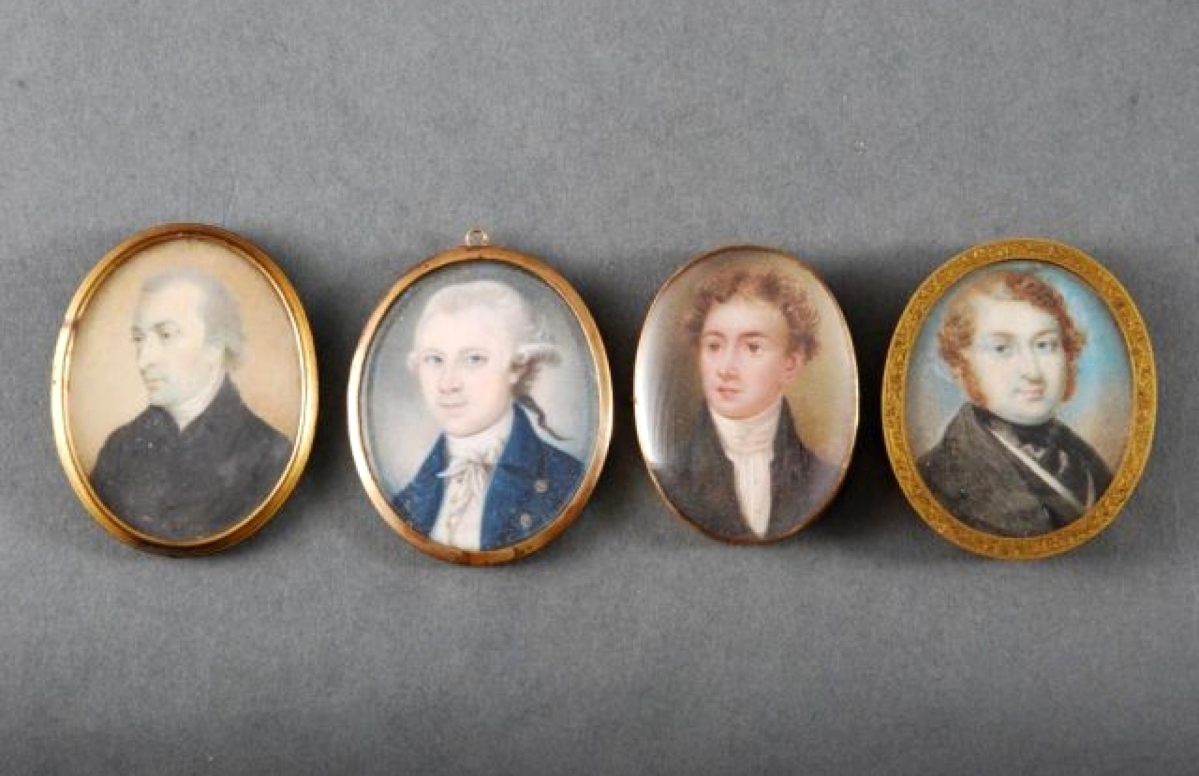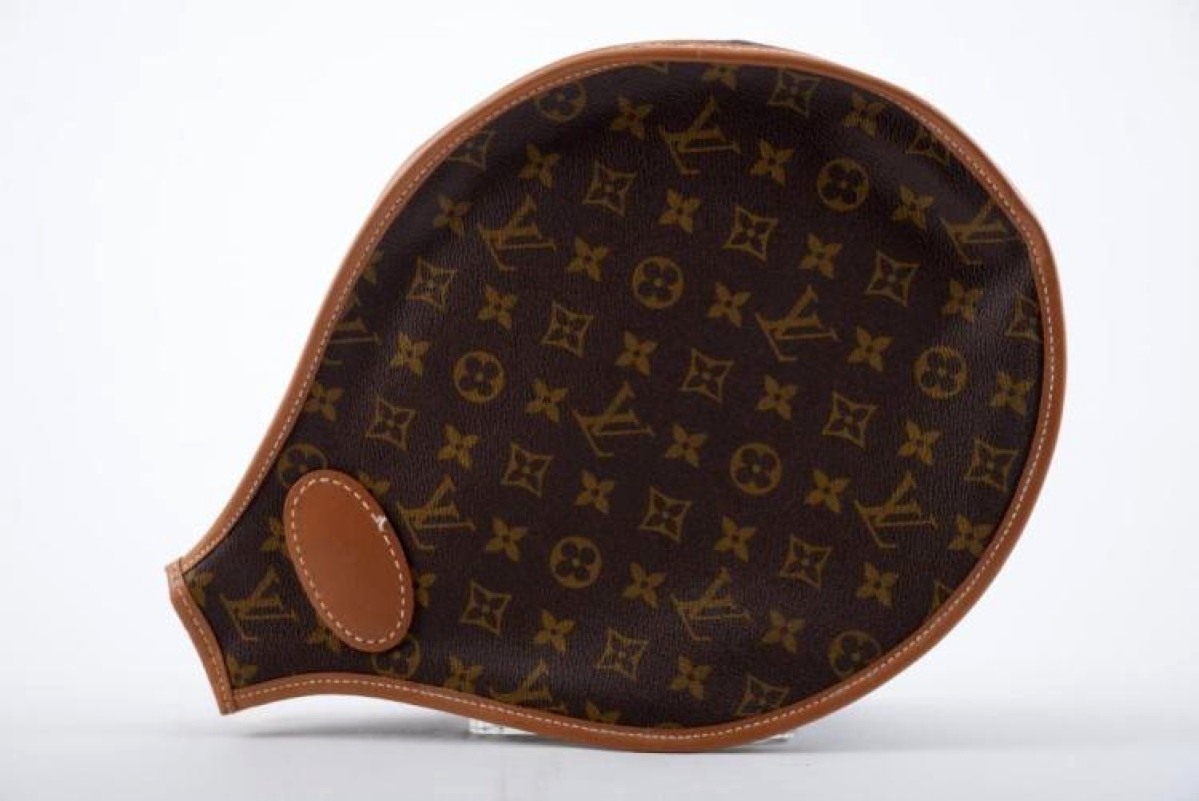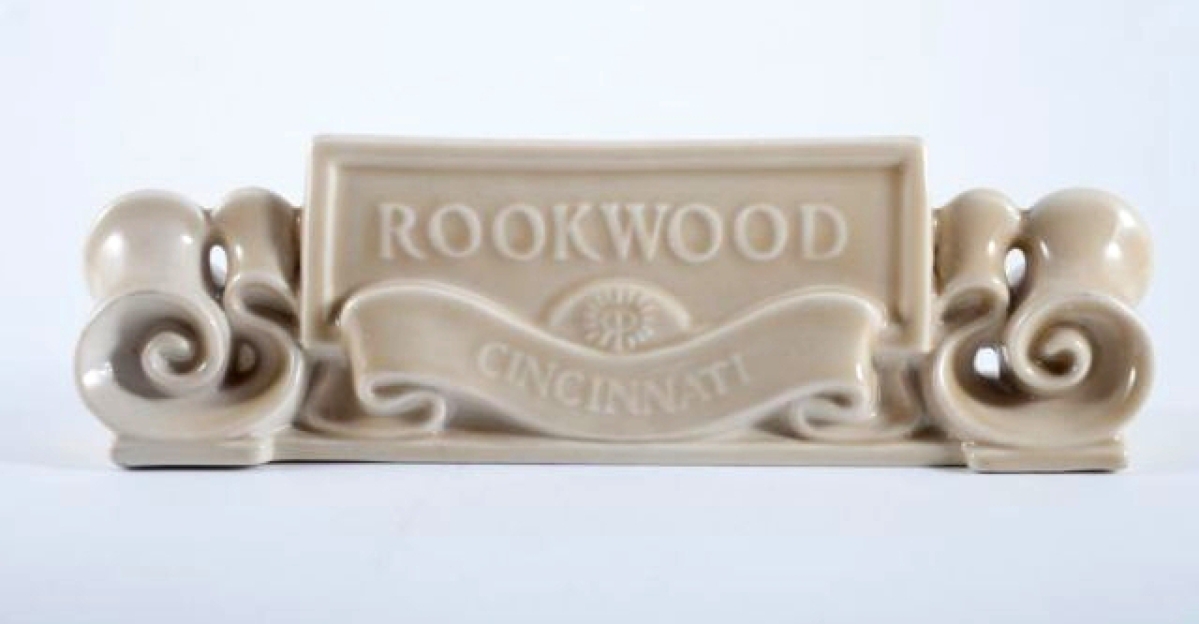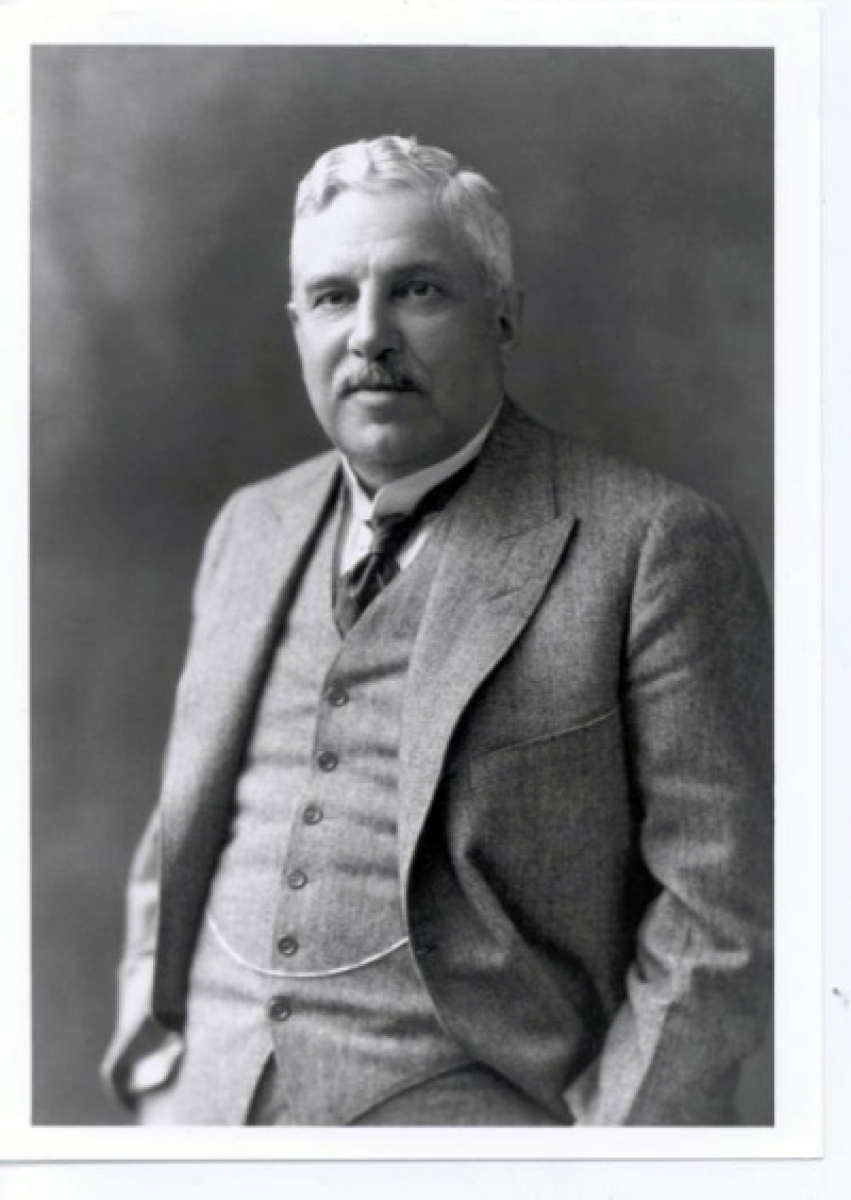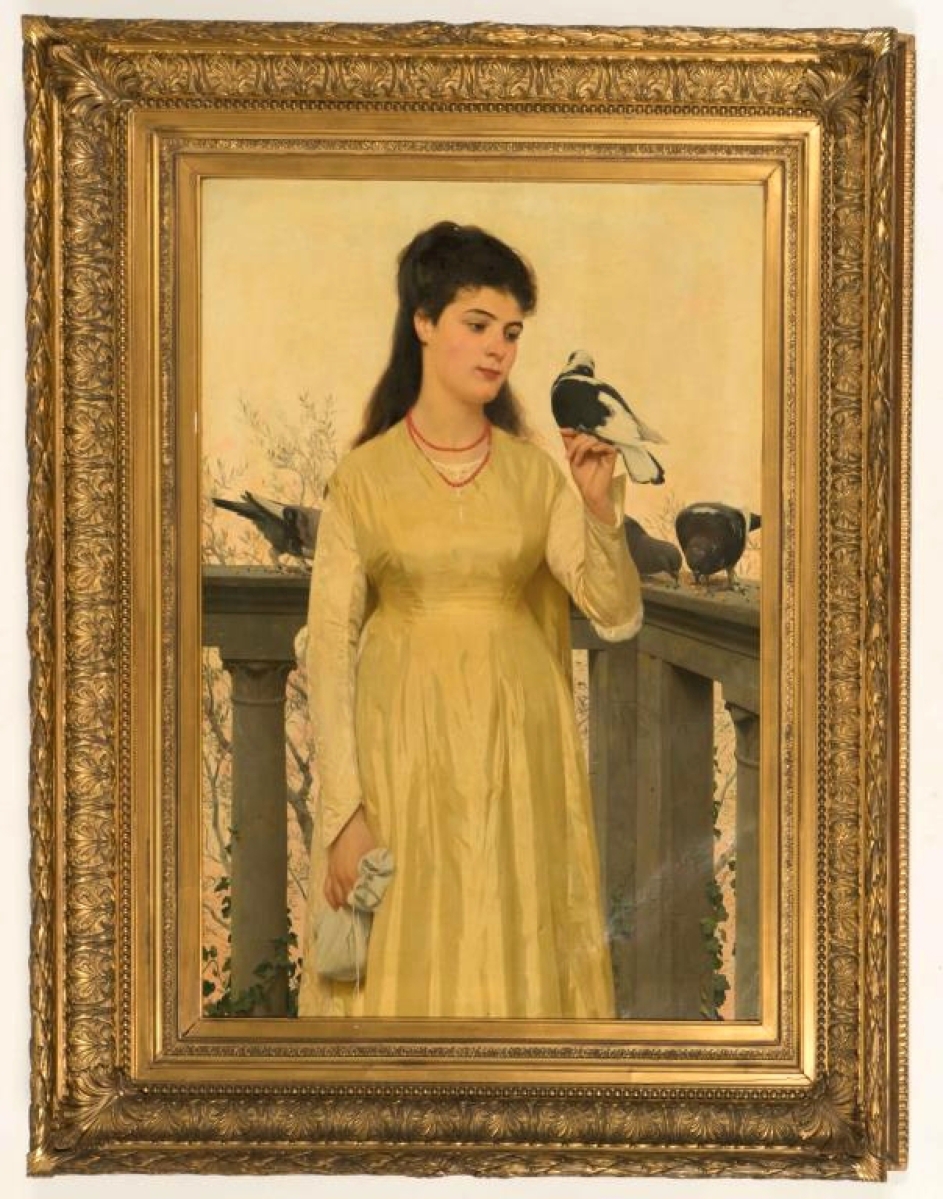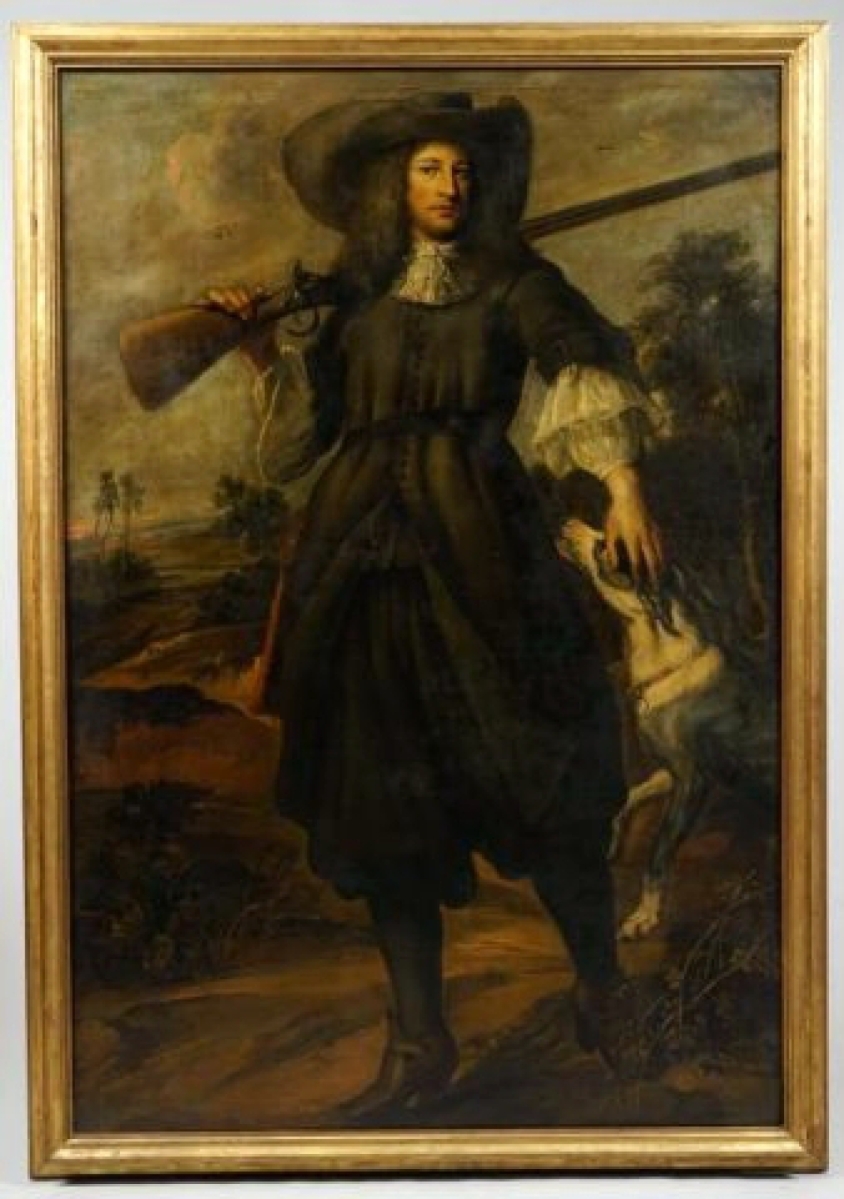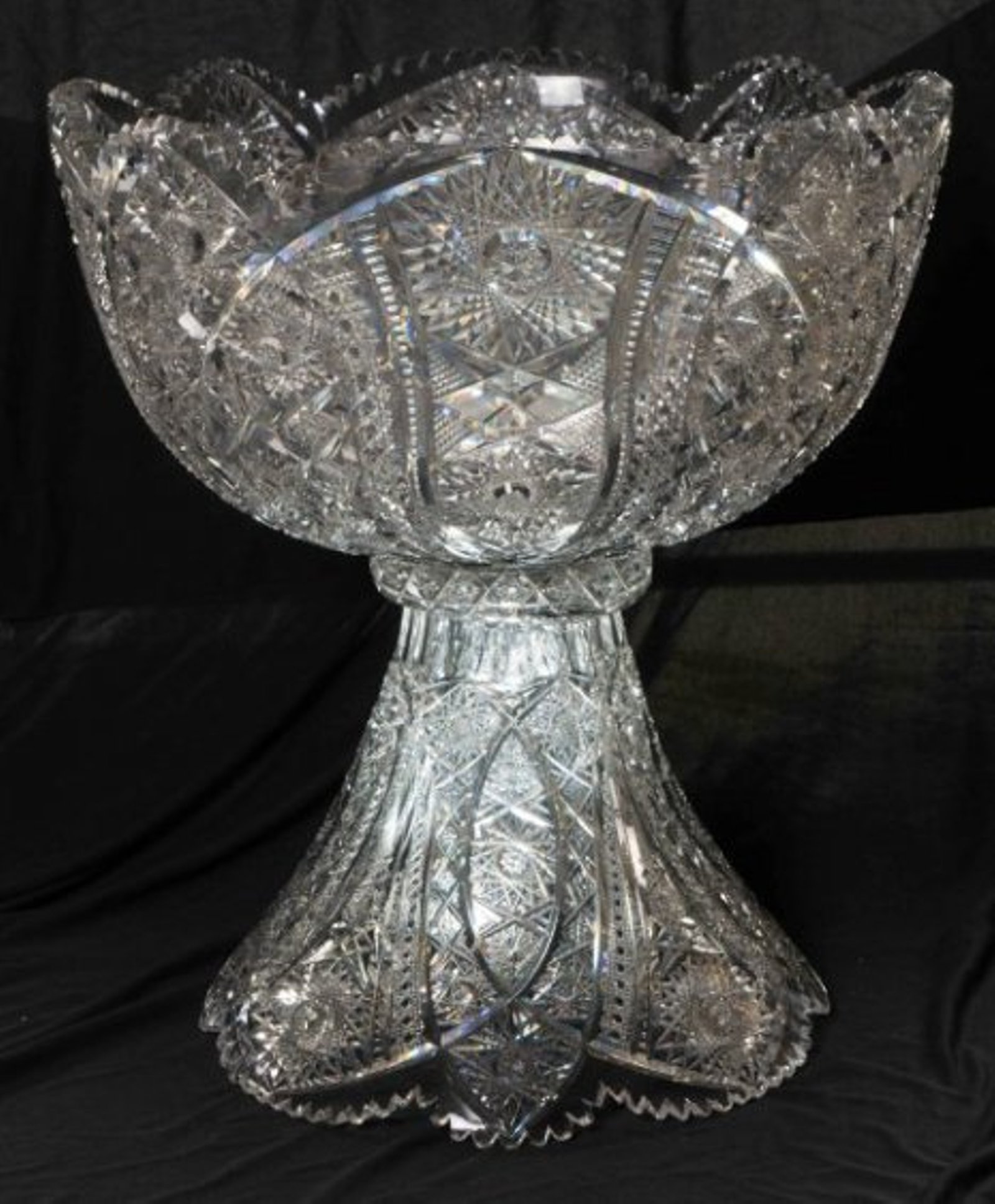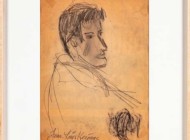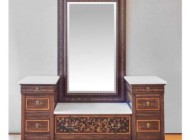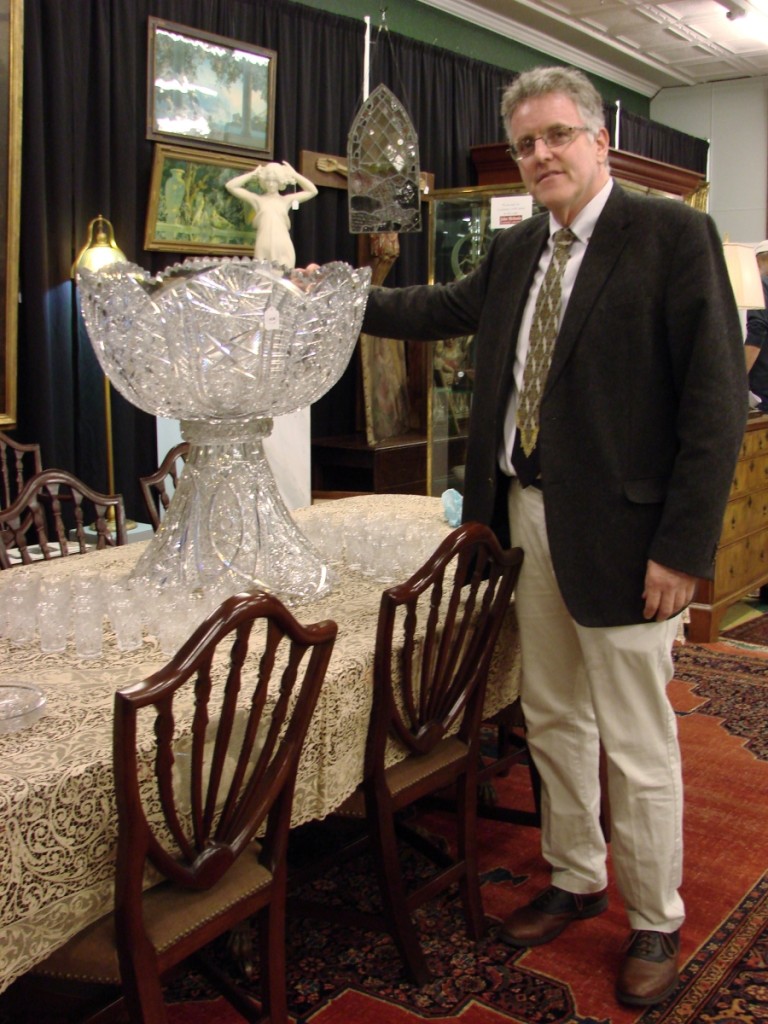
Gallery director Dan Meader with the unique cut glass punch bowl that he discovered on a house call.
Review and Onsite Photos by Rick Russack, Additional Photos Courtesy John McInnis Auctioneers
AMESBURY, MASS. – John McInnis’s sale, with more than 800 lots, totaled $1.4 million the weekend of October 27-28.
A massive cut glass punch bowl was bought for $66,000 by the Corning Museum of Glass. Dan Meader, McInnis’s gallery director, discovered it while discussing a consignment with a client in Andover, Mass. He said, “I was looking around in an unused room on the third floor of the house and saw what I thought was a cut glass lamp shade – but it wasn’t. I looked a little more and in the corner of the room I saw the rest of the piece – a huge punch bowl. What I had first found was just the base of it.”
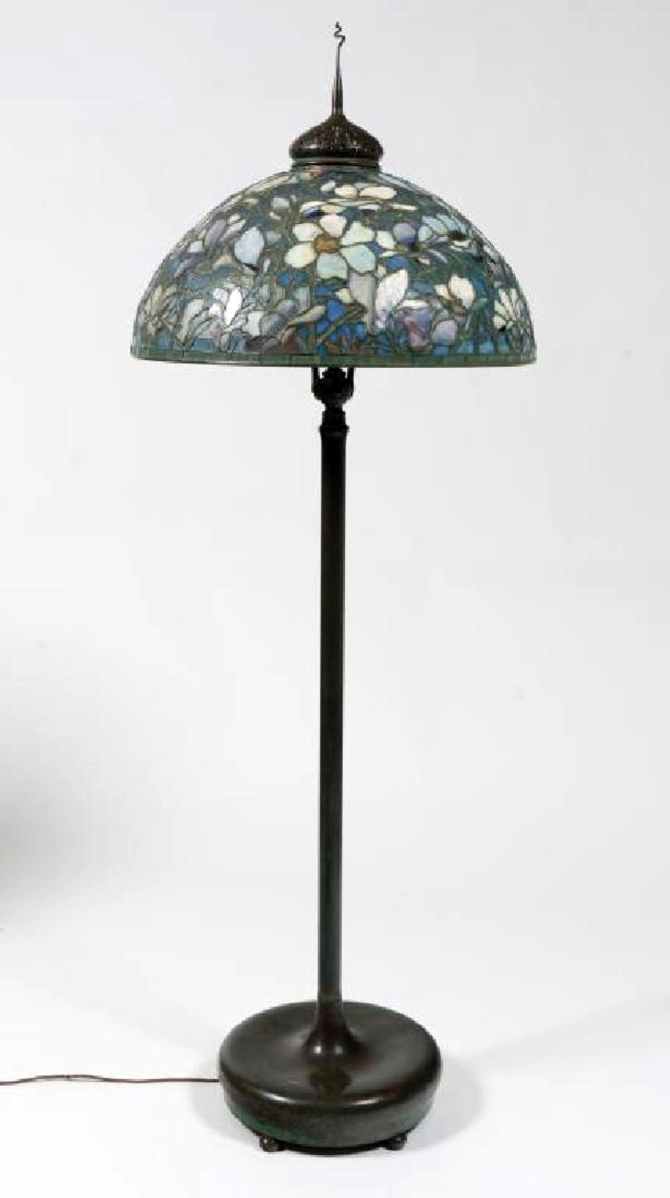
As expected, a Tiffany floor lamp, signed on the base and the Magnolia pattern shade, was the star of the sale. Four phone bidders competed until one paid $750,000 for it.
It turned out to be, according to Kelly Conway, curator of American glass at Corning, “probably the largest piece of cut glass in the world, and certainly the largest piece known to exist.”
The piece is 29 inches tall, the bowl itself 26 inches in diameter, the glass is about 1 inch thick, and it weighs around 150 pounds. The cutting is about 5/8th of an inch deep. It has a stapled repair in the base.
The family was unaware of the history of the piece, so when Meader cataloged it, he was conservative. Once online, however, the piece came to Conway’s attention and she immediately recognized it. “I was absolutely astounded to learn that the piece existed,” she said. “It’s an amazing feat of glassmaking.”
Conway knew that it had been commissioned by Tiffany & Co. for the 1905 opening of the firm’s first Fifth Avenue store. She had, in fact, discussed the piece at a 2015 talk she gave at the Somerville (Mass.) Historical Society, but, at that time, she did not know its whereabouts, or whether it still existed. What has Somerville to do with the story? The blank for the piece was made by the Union Glass Company of Somerville, a major producer of blanks for the cut glass industry.
Conway, who wrote her master’s thesis on the company, told the historical society that a team of 15 men spent 110 days meticulously cutting it. It was displayed in Tiffany’s showroom in New York with a price tag of $3,000. Another source, published in 1905 and uncovered just a short while ago, varies the story slightly. It says that the blank was sent to John S. Earl, a glass cutter in Brooklyn N.Y., where he and two assistants invested 210 days of labor cutting the bowl. A 1979 source also describes Earl’s work on the bowl, saying that “Mr Earl used a system of blocks and pulleys to balance the bowl while it was being worked on.” That source also said the bowl’s capacity was 30 gallons. There was also a hint that a larger punch bowl may have been made for “Diamond” Jim Brady, but Conway said, “There’s no evidence that it was ever made, and it is certainly not known to exist.”
The bowl acquired at the McInnis sale will be on display at Corning next year as the museum reinstalls the “Crystal City Gallery” to celebrate the 150th anniversary of glassmaking moving from Brooklyn to Corning.
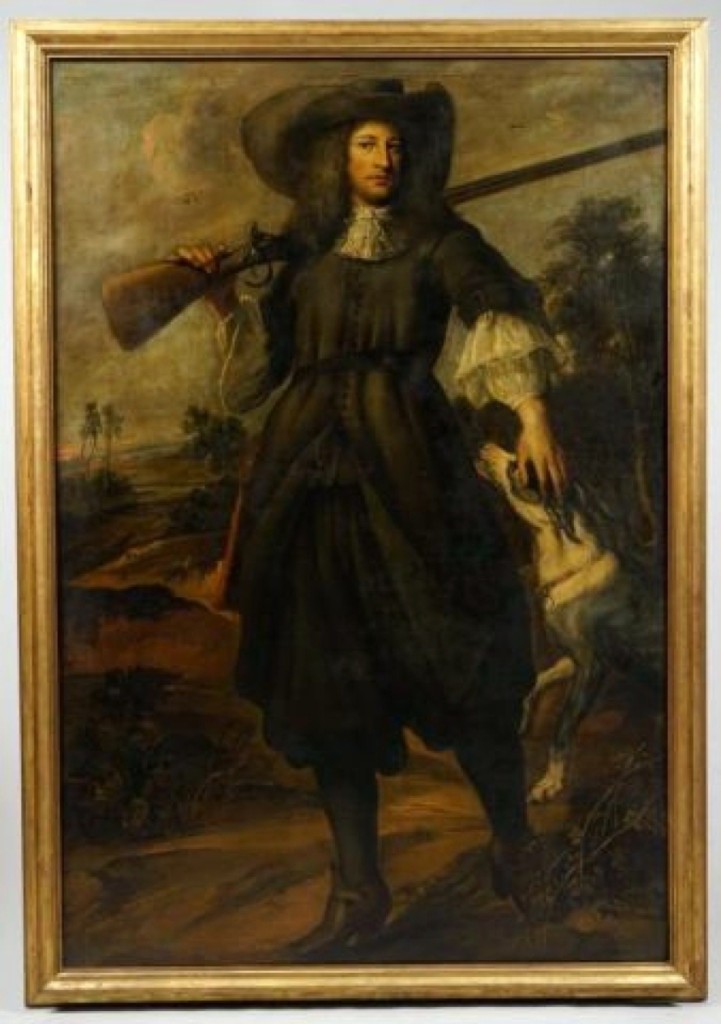
This painting by Bartolome Esteban Murillo, titled “Hunter,” sold for $20,400. It had been sold at an 1821 auction of paintings in Boston, and an original copy of that auction catalog accompanied the painting, as did its tag from that sale.
Research indicated that Tiffany apparently sold the massive bowl to William Madison Wood of Andover, who had also bought other pieces from the firm, including the Magnolia floor lamp that brought $750,000 at this sale. Wood was one of the founders of the American Woolen Company and a very wealthy man. But wealth and happiness do not necessarily go together, and Wood’s story is not a happy one.
He was the son of Portuguese immigrants, and made his fortune from the textile mills he owned in Lawrence, Mass., and other places. Wood was successful running his own mill and was asked by Frederick Ayer, of patent medicine fame, to manage a bankrupt mill he had just bought. To make a long story short, Wood agreed, turned the mill into a profitable enterprise, married one of Ayer’s daughters and, along with Ayer, formed the American Woolen Company by merging several smaller mills into their company. Wars came along and both the company and Wood prospered. Unions also came along, and in 1912 the Industrial Workers of the World (IWW) called the workers out on strike. Although the strike was eventually settled, Wood was charged with planning to sabotage a building and blame it on the IWW. After a criminal trial, he was acquitted.
As time went on, Wood was grooming his very capable son, William Madison Wood Jr, to take over management of the company. However, in 1923 the younger Wood, at the age of 30, was killed while racing his Rolls against a Stutz driven by friends. The elder Wood was devastated. The death of his son, together with the death a few years earlier of his youngest daughter and health problems, led the elder Wood to commit suicide in 1926. His enormous wealth, in the end, did not bring happiness.
The sale was led by the Tiffany lamp and the punch bowl, but there was plenty of other good stuff that found willing buyers. In fact, very few lots were passed. Several fine paintings came from a home in Beverly, Mass., that had been the summer White House while William Howard Taft was president, 1909-13. Of particular interest was a painting known as “The Hunter,” done by Bartolome Esteban Murillo (1617-1682). The unsigned painting, 74 by 52 inches, was accompanied by an 1821 catalog of an auction at a gallery on Brattle Street, Boston. Selling prices were not noted, but the catalog stated, “Admittance to the collection of paintings, and catalog, 25 cents. Admittance to the exhibition and the day of sale 50 cents.” The painting sold for $20,400.
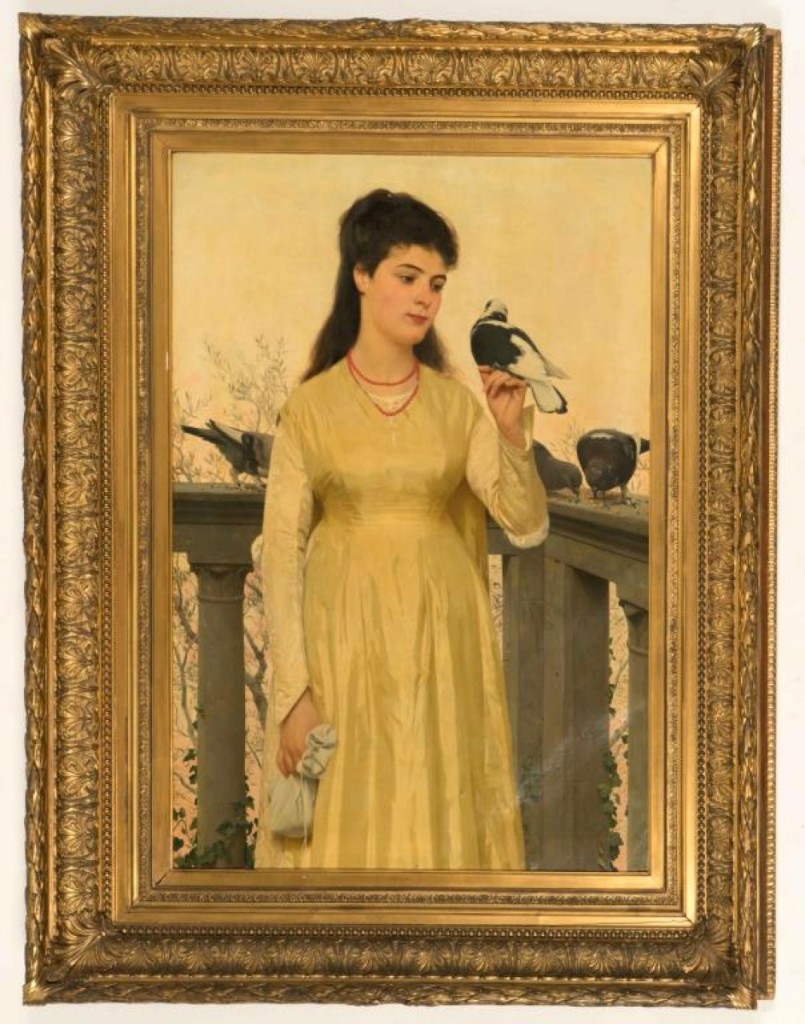
Raffaello Sorbi’s large oil painting “On The Balcony” came from a North Shore home that had once been the summer White House of William Howard Taft. An art prodigy at the age of 18, this painting earned $21,600.
Also doing well, finishing at $21,600, was a portrait of an attractive woman with a bird perched on her hand. The oil painting by Raffaello Sorbi (1844-1931), titled “On the Balcony,” 47 by 61 inches, was signed and dated 1875. Sorbi came from Florence, Italy, where he studied at the Academy of Fine Arts, founded by Cosimo I de’ Medici in 1563. He was an art prodigy; in 1861, at age 18, one of his paintings was awarded first prize at the Florentine Trienniale contest.
Art Nouveau and Arts and Crafts items performed well. A Tiffany leaded glass lamp in the Banded Grape Leaf Rope design, signed on the base and shade, went for $12,000. A Duffner & Kimberly Owl leaded glass table lamp brought $3,600, a frosted R. Lalique 9½-inch Ceylon pattern vase earned $3,300, and a 14-inch signed Galle cameo vase in amber and ochre cut to clam broth reached $1,920.
A very unusual Arts and Crafts salesman’s sample settee, with front legs that slide out to reveal a bed with original ticking, achieved $1,080. A group of five Arts and Crafts upholstered chairs attributed to Gustave Stickley, sold for $2,400. The group included a Morris chair and four rockers, three of which had arms. As he was selling these, McInnis said, “They’ve always been together so we decided to sell them together. Hopefully, they’ll stay that way.”
The Wood family collected books, which they took good care of, and some of their travel books did well. An eight-volume set of first editions of Captain Cook’s three voyages, published in London between 1773 and 1784, sold for $19,200. Included was a separate folio-size volume with the maps and exceptional, large engravings, many by William Hodges, an artist who accompanied the expeditions. Cook’s voyages were some of the most important scientific expeditions of their time, including observations of the Transit of Venus, explorations in Australia and New Zealand, circumnavigation of Antarctica and more. The three-volume, leather-bound set, An Account of The Voyages Undertaken by the Order of His Present Majesty for making Discoveries in the Southern Hemisphere by John Hawkesworth, published in 1773, reached $4,200.
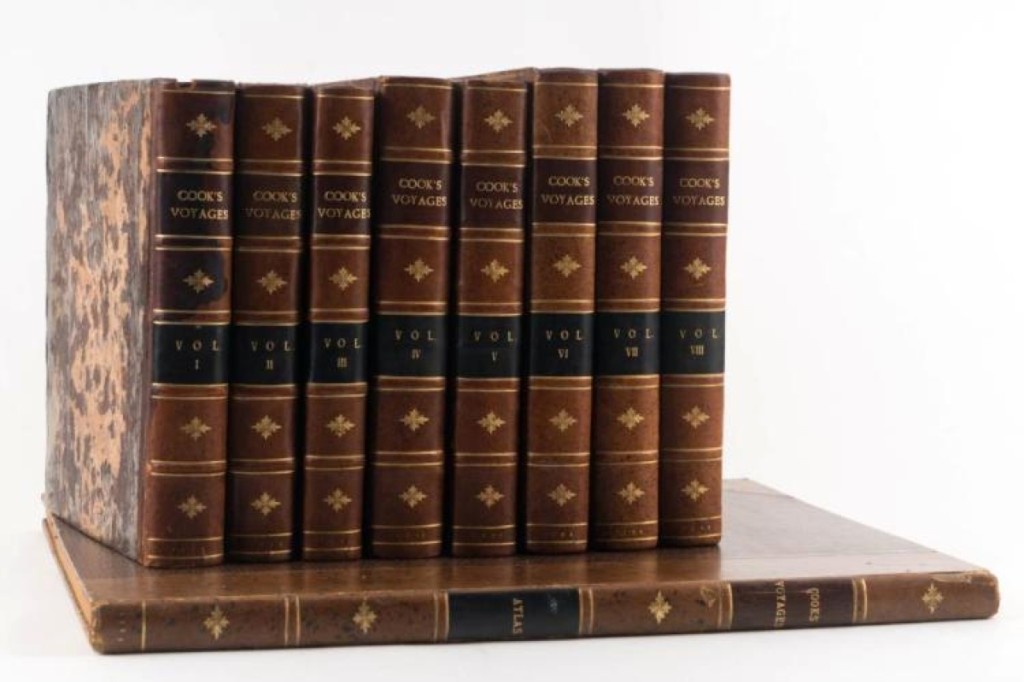
An eight-volume set of reports of Captain Cook’s voyages, plus a folio-sized volume of engravings and maps, earned $19,200. The leather-bound volumes were in fine condition and each report was a first edition, published between 1773 and 1784.
The first day of the sale included silver, jewelry and Asian items. The 80 lots of silver included a Nineteenth Century three-piece Colonial Indian silver tureen, which earned $2,040. A Gorham sterling silver sphinx centerpiece finished at $2,280, and a sterling silver flatware service for 12 in the Chateau Rose pattern realized $1,620. The 80 lots of jewelry included a 14K white gold lady’s ring with a 1.9-carat brilliant marquise-cut diamond, J,K,L color and VVS clarity, which attained $4,200, and an 18K diamond and emerald box-link bracelet, which made $2,040.
Japanese silver and a Chinese carved jade brush washer led the Asian portion of the sale. Two Japanese sterling silver teapots with overall chrysanthemum repousse motif and applied dragon handles, both signed by Konoike, brought $2,700, and $2,400. The Nineteenth Century jade brush washer with carved and pierced cherry blossom motif garnered $2,700.
Prices reported include the buyer’s premium.
For additional information, www.mcinnisauctions.com or 978-388-0400.

